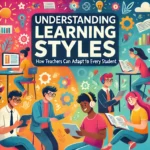Effective communication between teachers and parents is essential for fostering a supportive learning environment for students. When teachers and parents work together, it creates a partnership that enhances student success and well-being. Here’s how teachers can master the art of communication with parents to build strong, collaborative relationships:
-
Establish Clear Communication Channels: From the beginning of the school year, it’s important to establish how and when communication will take place. Whether through emails, phone calls, or a classroom app, having a clear and consistent method for updates helps avoid misunderstandings and ensures that important information is shared promptly.
-
Be Proactive and Positive: Don’t wait for problems to arise before reaching out to parents. Regularly share positive news about their child’s progress and achievements. Proactive communication helps build trust and ensures that parents feel involved in their child’s education.
-
Listen Actively: Effective communication is a two-way street. When parents express concerns or share insights about their child, listen actively and empathetically. Acknowledge their perspectives, and work together to find solutions that benefit the student.
-
Provide Specific Feedback: When discussing a student’s performance, be specific. Rather than general comments like “Your child is doing well,” provide detailed feedback on what the student is excelling at and where they might need more support. This helps parents understand their child’s strengths and areas for improvement.
-
Be Culturally Sensitive: In today’s diverse classrooms, it’s important to be aware of cultural differences that might affect communication styles and expectations. Being respectful and understanding of different backgrounds can help build stronger relationships with parents from all walks of life.
-
Encourage Parent Involvement: Invite parents to be active participants in their child’s education. This could be through attending parent-teacher conferences, volunteering in the classroom, or participating in school events. When parents are engaged, students benefit from a more cohesive support system.
-
Follow Up: After meetings or important conversations, follow up with a summary of what was discussed and the agreed-upon next steps. This helps ensure that everyone is on the same page and reinforces the commitment to working together for the student’s benefit.
-
Be Solution-Oriented: When challenges arise, focus on finding solutions rather than assigning blame. Approach problems with a collaborative mindset, seeking input from parents on how best to support their child. This approach not only resolves issues more effectively but also strengthens the partnership between teacher and parent.
Building effective communication with parents requires effort and intention, but the rewards are well worth it. By fostering open, respectful, and proactive dialogue, teachers can create a positive and collaborative environment that supports student success both in and out of the classroom. When parents and teachers work together, everyone benefits—especially the students.


